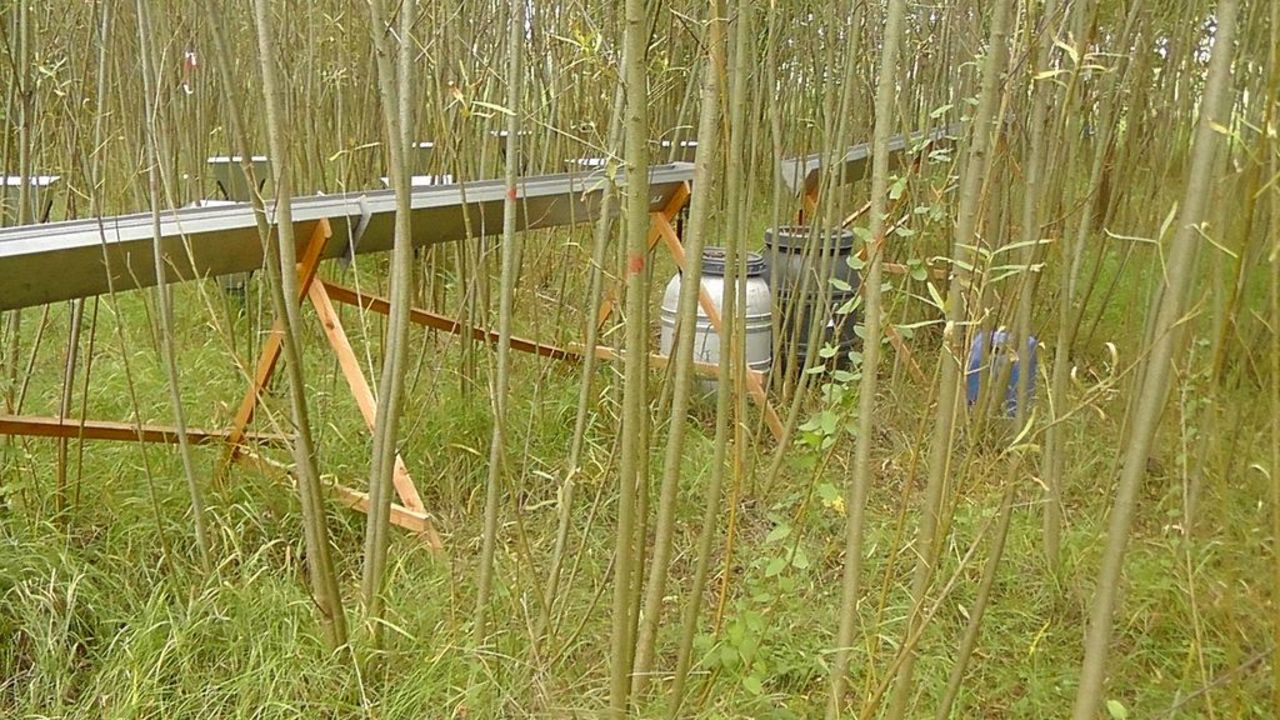Project
Strengthening bioenergy regions (BEST), WP 'irrigation'

Strengthening bioenergy regions - work package 'irrigation' (BEST, IO-A4)
The most importantfactorfor the yieldofenergyresourceisthe availability of water. Due to thedry conditionsof the Thuringian Arable Plain, the use of localwater resourcesis a necessary conditionforan optimal yieldofshort-rotationcoppices.
Background and Objective
The Thuringian basin is one of the driest regions in Germany. The irrigation of short rotation coppice (SRC) stands with biologically treated wastewater is an interesting option to compensate water shortage and to increase biomass production for energy use. The studies are aimed at examining the additional yield potentials in irrigated versus non-irrigated short rotation coppice (SRC) stands.
Approach
- Development of concepts for wastewater irrgation.
- Measurement of irrigation demand of short .rotation coppices (SRC) by an irrigation model ("ZEPHYR").
- Implementation of afurrow irrigationby a tank wagon.
- Establishment of field plots; assessments of field ecological and yield parameter.
Data and Methods
In order toquantifythe growth offast-growing tree species as a function ofprecipitation andirrigationevents, the following measurementswere performed:
Parameter | Equipment | Frequency BERTA I + II |
Openland precipitation | Rain gauge | After rain |
Throughfall | Rain collector | 1x monthly |
Radial growth | Dendrometer | 1 Apr.-30 Sept.: 3x weekly |
Height growth | Telescopic rod | 1 Apr.-30 Sept.: 2x weekly |
Total stem volume | Callipers, telescopic rod | After vegetation period |
Leaf biomass/ leaf area index (LAI) | Collection of dead leaves Leaf harvesting from representative trees | 1x monthly; in autumn 1x fortnightly |
Woody biomass | Balance | After vegetation period 2013 |
Results
- Due to irrigation regime the short rotation coppice (SRC) stand could grow in the years 2012 and 2013 under optimal water supply (>50% of the soil available water storage), and thus could produce high amounts of biomass.
- Irrigated stands showed a higher radial and height increment than the non-irrigated ones, and produced more leaf and woody biomass.
Links and Downloads
best-forschung.uni-goettingen.de
Involved Thünen-Partners
Funding Body
-
Federal Ministry of Education and Research (BMBF)
(national, öffentlich)
Duration
3.2011 - 8.2014
More Information
Project funding number: FKZ 033L028
Project status:
finished
Publications
- 0
Lorenz K, Müller J (2015) The effects of irrigation on the growth of poplar and willows cultivated in short rotation. In: Butler Manning D, Bemmann A, Bredemeier M, Lamersdorf N, Ammer C (eds) Bioenergy from dendromass for the sustainable development of rural areas. Weinheim: Wiley-VCH, pp 147-159
- 1
Lorenz K, Müller J (2013) Ergebnisse zur Nettoprimärproduktion von mit biologisch geklärtem Abwasser bewässerten Pappeln und Weiden im Kurzumtrieb. Landbauforsch Appl Agric Forestry Res 63(4):307-320, DOI:10.3220/LBF_2013_307-320
https://literatur.thuenen.de/digbib_extern/bitv/dn053244.pdf

